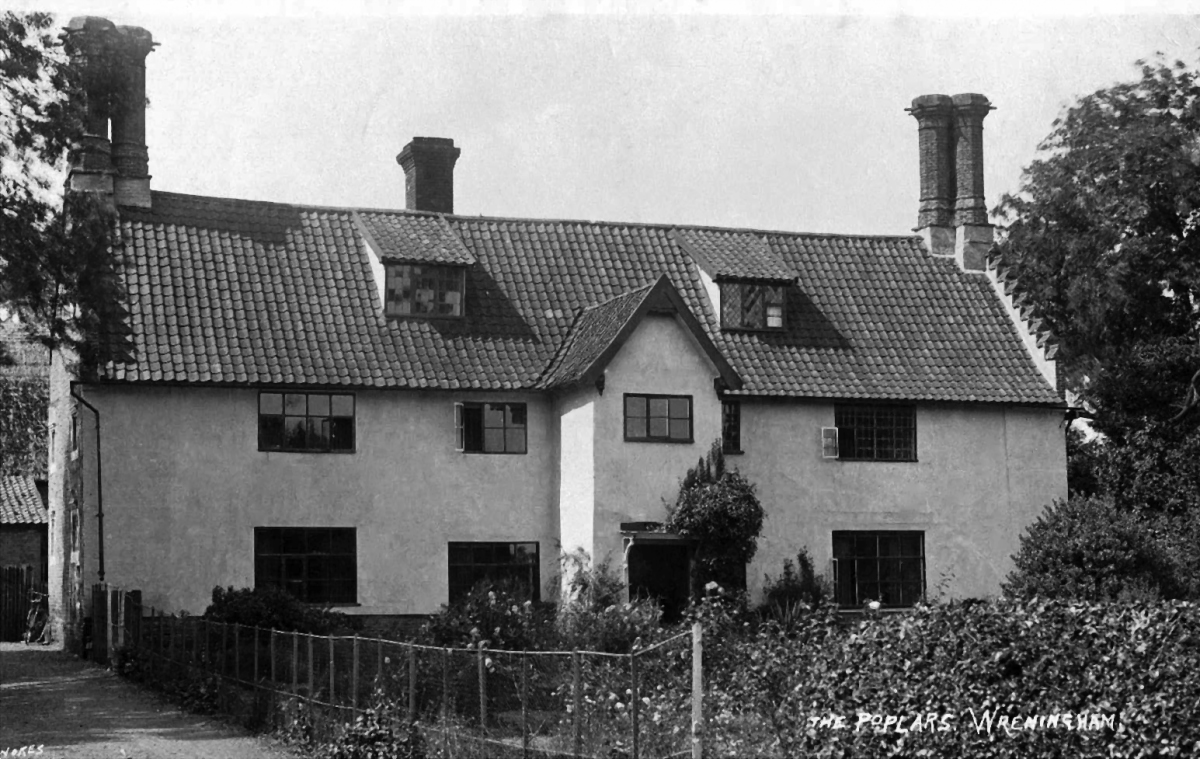
The Burton Era
The earliest record we have seen for this farm dates back to 1805 when Charles Harrison, the owner and landlord had agreed a tenancy/”rental” agreement with the senior William Burton – who would have been about 57 at the time of the agreement.
There was an earlier Charles Harrison (father of the Charles in the 1805 agreement) who had died in 1804. We are presuming the 1805 agreement was replacing an earlier document?
The senior Harrisons appear to have (always?) lived at Palgrave; in this agreement, the previously, “junior” Harrison was still living in their other farm in the next-door village of Wortham.
A transcription of the 1805 agreement can be found here.
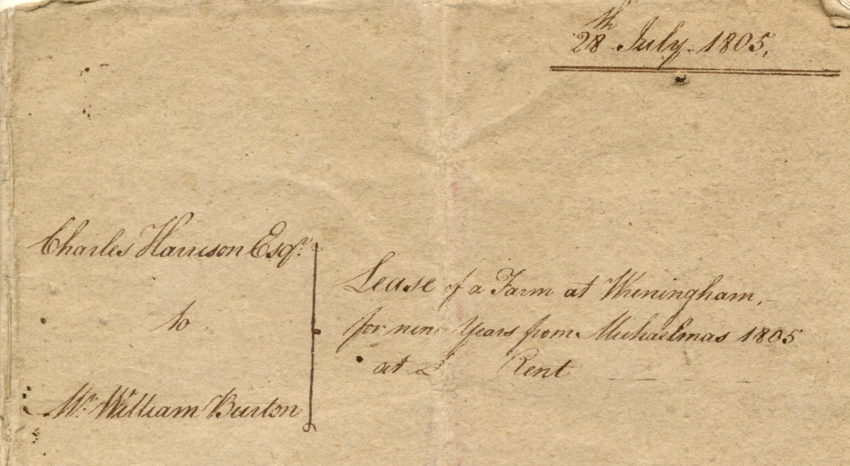
There must have been successor documents, including one following Charles Harrison’s death in 1825 (when Charles’s wife inherited his estates) and following William Burton’s death, in 1840, when son, William Otley Burton took over the tenancy – and Maria Burton, after him, in 1857.
The farm estate runs to about 250 acres on the south side of Wreningham parish and bordering the northern edge of Ashwellthorpe. At the heart of the farm is a striking Elizabethan residence: “The Poplars” next to which is a large medieval barn. This barn and the farmhouse (and Wreningham Church) are amongst the earliest surviving large buildings in the village.
The present-day National Heritage List for England includes both the farm house and (separately) the barn.

NB The top of the right-hand pages are marked “Hill”. There are no equivalent “labels” on the left.
A notebook has been discovered which appears to have belonged to John Bullimore. It provides a detailed listing of the crops sown at three farms: Burtons Farm from 1857 to 1870 and both Hill Farm and Elm Tree Farm from 1857 to 1883. Elm Tree Farm appears to have been know as “George’s Farm at the time.) The younger William (Otley) Burton had promoted John Bullimore to Farm Steward in 1856 (see JB’s statement here) and he was maintained in that role, but working for Maria Burton, after William Burton’s death the following year.
Although the Burtons were tenants at “Burtons” Farm, they had become owners of a considerable amount of other village land – including Hill Farm and Elm Tree (George’s) Farm. John Bullimore is understood to have performed the same steward/supervisory role at all three farms. It would appear the farm labourers were shared between the three farms. (In his notebook, John Bullimre may have used the word “Hill” as a sort of abbreviation – because Hill Farm and Elm Tree/George’s farms occupy slightly more elevated land than Burtons Farm.)
Each page of the book is divided into three columns. The left column gives the field name. The centre details the crop sown and the right column provides the field acreage.
We already have a c1918 listing of all the field names and their acreages for Burtons Farm / Poplar Farm and the same field names/sizes tally with the information in the notebook. However, the Burton’s Farm fields listed in the notebook only relate to about 180 acres out of the total 250 acre farm – and where he is practising crop rotation. The other fields at all three farms appear to have been permanently maintained as grass meadows.
The “Hill” right-hand pages are set out in the same three columns. However, we haven’t yet studied the individual field names/acreages for Hill & Elm Tree / George’s Farms to be able to make the equivalent comparison about the proportion of the farm estate in cultivation.
In 1870, Maria Burton died. As a result, the Burton tenancy and their occupancy of “Burtons” Farm ceased. However, Maria Burton bequeathed Hill Farm and Elm Tree / George’s Farm to John Bullimore in her Will and John Bullimore made Hill Farm his home. His planting records for Burtons Farm ceased after 1870 whilst the notebook continued to document crop plantings at the other two farms until 1883.
The Burton family lie in a neat row in Wreningham churchyard complete with matching headstones.
It wasn’t snowing when this old photograph was taken. The effect is simply due to the chemical decomposition of a very old photograph.
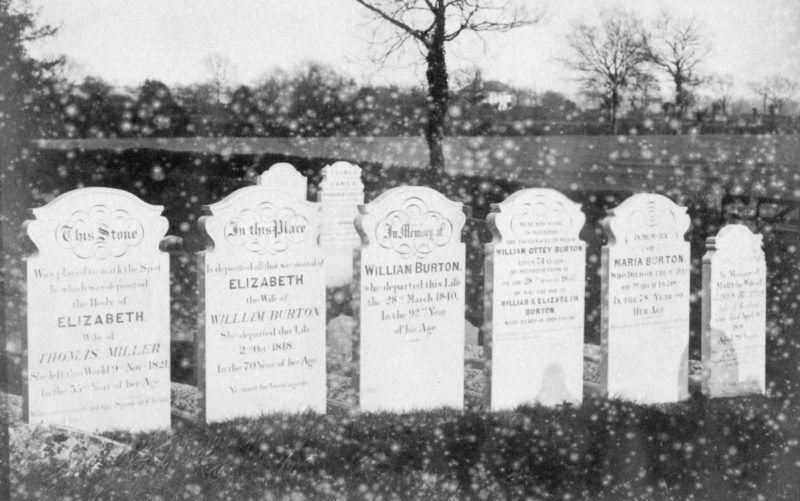
The Bothway Era
Shortly before Maria Burton’s death “the “Burton’s” farm was sold to Sir Henry Thomas Tyrwhitt in Wreningham’s 1869 great farm auction. He was the husband of the eventual Lady Berners of the Manor, centred in in Ashwellthorpe. The timing of the farm purchase was unfortunate for the new owner due to cheap grain imports arriving from the USA during the early 1870s and onwards. UK agricultural produce and farmland prices slumped. It was an extremely long time before land prices rose back to their c1870 levels.
The tenant farmer replacing Maria Burton was Henry Bothway. He soon arrived with his wife and family.
On 5th August 1880, the Great Eastern Railway purchased 11 acres and 12 perches of land from Sir Henry Tyrwhitt in connection with the new line through the village. In the middle of the 1900s, after the closure of the railway, the Bothway family were able to re-acquire this land. However, most of this railway “land corridor” across the farm had been formed into embankments and cuttings; as a result, most it (today) remains “contained” by trees and hedging from its railway era and never returned to agricultural production.
When owner, Sir Henry Tyrwhitt, died in 1894, the farm passed to his widow: Lady Berners.
Henry Bothway farmed until his death in 1902 and was succeeded by his 18 year-old son, Herbert. Following the death of Lady Berners in 1917, her successor only lived for a further year and the next Lord of the Manor quickly decided to sell. Fortunately, Herbert Bothway was able to raise a £7,000 mortgage – enough to purchase the whole farm. For a period during the early 1900s, the farm appears to have been named “Home Farm”.
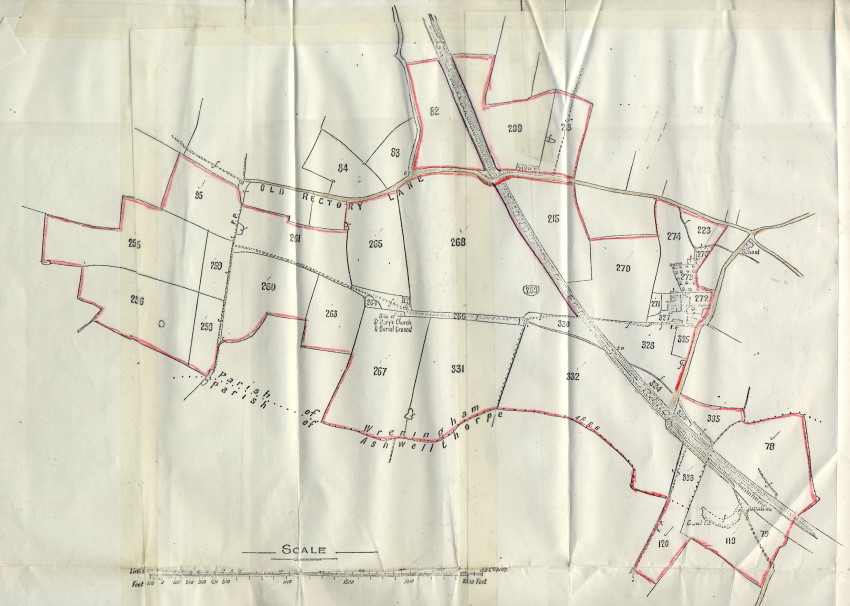
The above map shows the arc of the railway line (built c1880) sweeping across the eastern side of the farm and appearing to cut off the farm buildings in Ashwellthorpe Road from the majority of the farmland to the south and west of the railway. However, it’s possible to make out an east-west pathway/lane which runs from the farm buildings (by the present-day “Old Stables”) westwards between the majority of the fields – and on both sides of the railway line.

An extract from OS 25 inch map of 1906 (circled in red above) appears to show a (gated?) crossing point where this east-west pathway/lane meets the railway on level ground. Some of the farm buildings can be seen to the right. Presumably this crossing point provided the farm with ready access for farm workers, animals and their equipment to move between the two sides of the line.
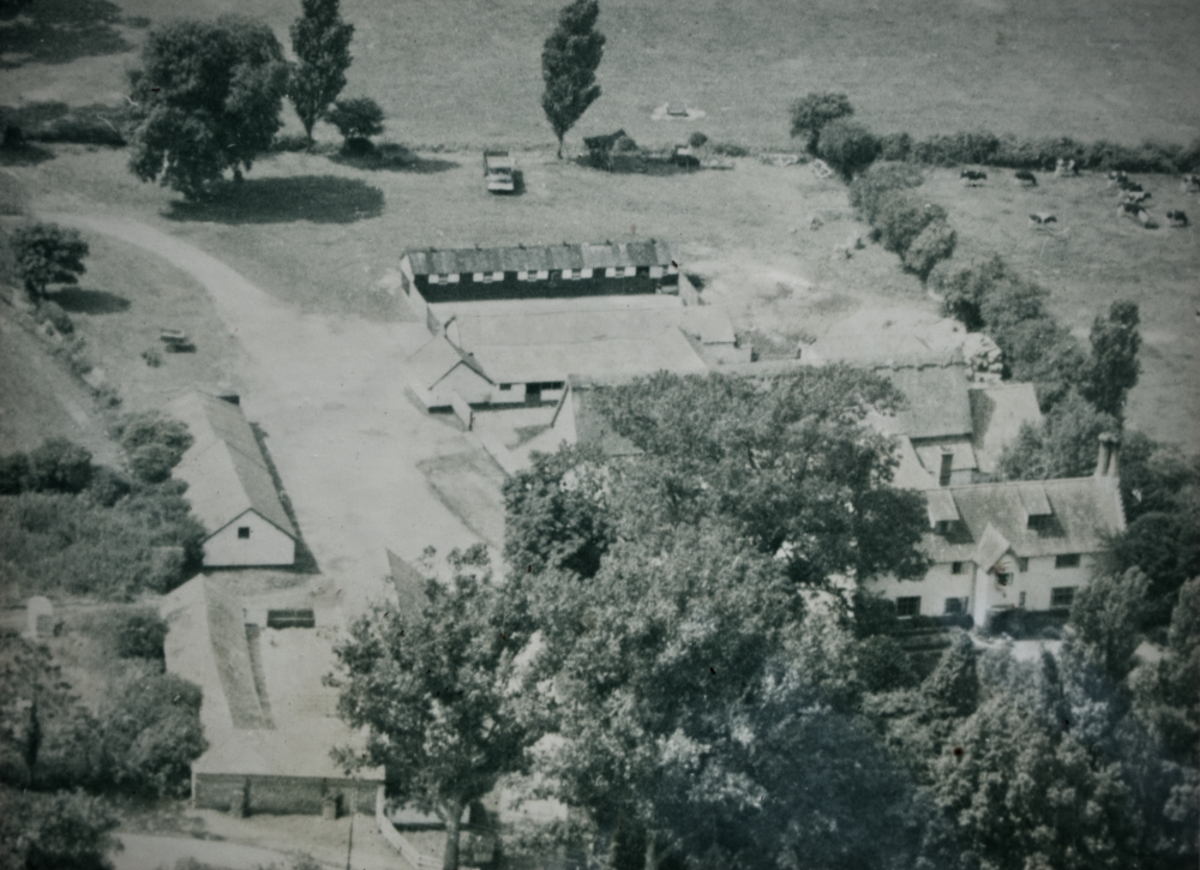
Herbert Bothway remained in charge until being succeeded by his grandson, Robert Bothway, in the late nineteen sixties.
Until this point, much of the work at the farm was still being powered by horses. There needed to be a rapid mechanisation to achieve a suitable level of competitiveness.
Robert Bothway eagerly took up the challenge.
Trotting Races
As a sideline, in the 1980’s Robert Bothway constructed a horse trotting track at Poplar Farm. It became immensly popular and regular race meetings were attended by hundreds of people from all over the country. Events are mostly believed to have been organised for the summer months. The trotting track was situated in a large field adjacent to Ashwellthorpe Road which straddled the parish boundary between Wreningham and Ashwellthorpe.
An aerial image showing the Trotting Track (in 1988) can be seen from this link – zoom into the Wreningham part of the map and tick the box: “NCC 1988”. Then look at the fields situated to the south of Poplars Farm. The grass trotting track is oval in shape – and large enough to be unmissable!
In 1983, a formal plan was submitted to construct a greyhound racing track inside the existing Trotting Track. The declared intention was to have many dozens of meetings each year. Following a short but intense local protest, these plans were withdrawn.
Much more information is provided on the Wreningham Raceway page.
Do YOU have any memories of the trotting race meetings? They are said to have had a fairground atmosphere! Perhaps you even have old photos, race programmes etc? We would love you to share your memories!
